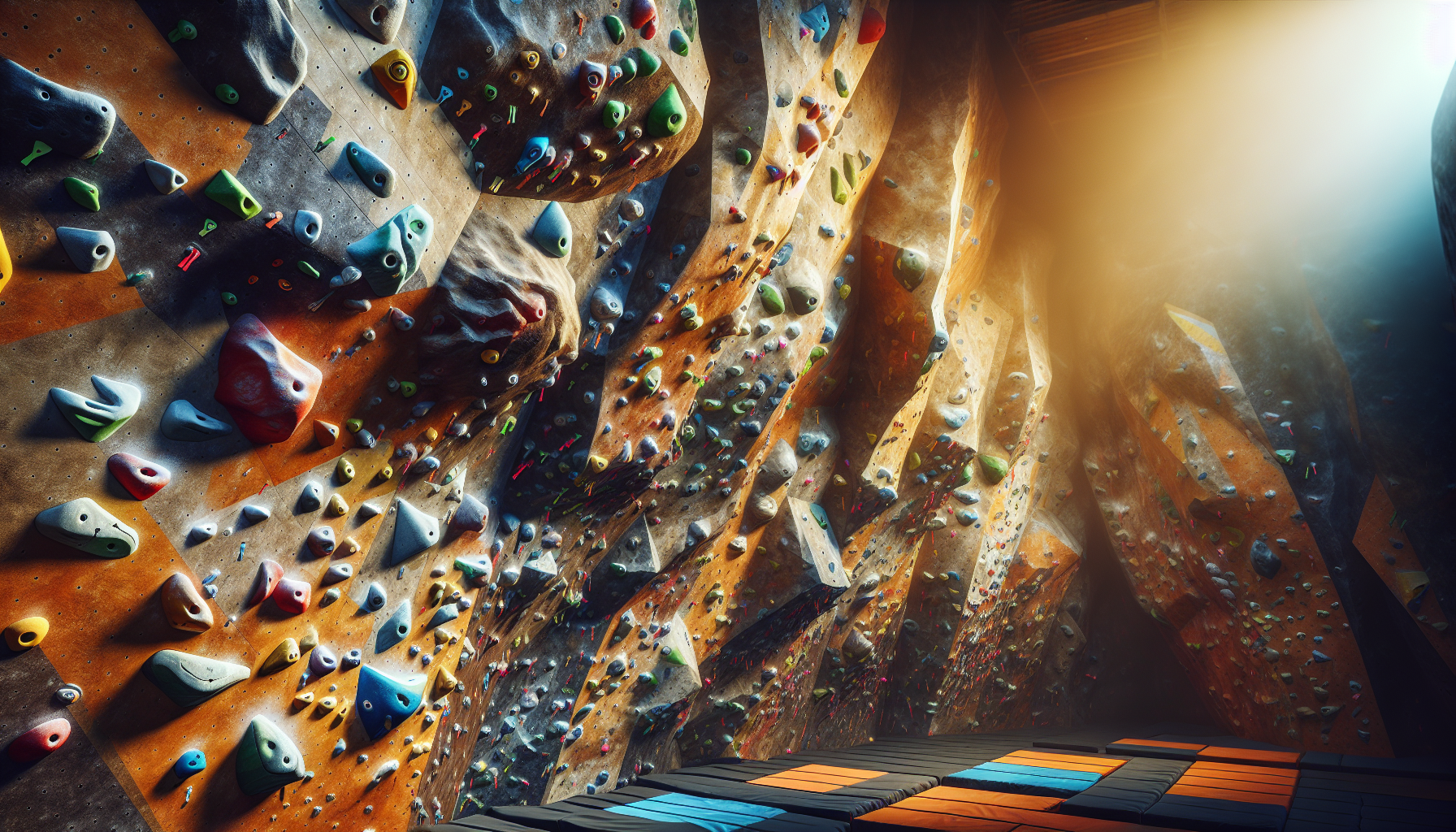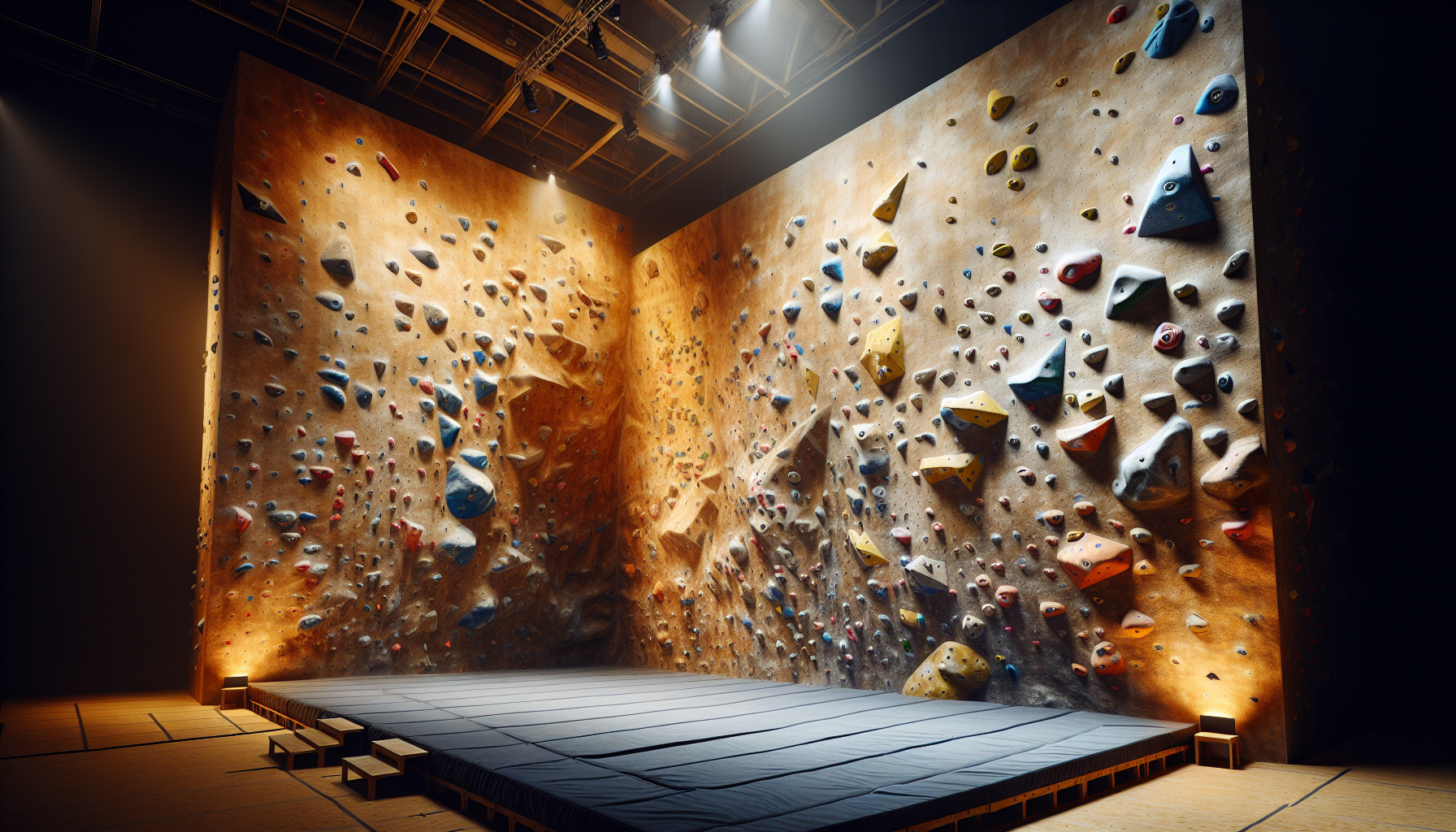
Venturing into the world of climbing opens up a realm of excitement and skill-building opportunities. For those new to the sport, tackling friendly boulder problems can foster important techniques while bolstering confidence.
By starting with approachable routes, beginners can enjoy their time on the climbing wall without feeling daunted by challenging grades.
A bouldering wall typically offers a variety of paths designed for different skill levels.
Selecting climbs that align with your ability is crucial for a positive experience, promoting enjoyable practice sessions. When faced with manageable boulder heights and thoughtfully placed holds, mastering essential techniques becomes not only feasible but also enjoyable.
Keep in mind that proper foot placement plays a significant role in your advancement on the climbing wall
Finding The Right Grade For You
Embarking on a new climbing journey requires careful consideration of various factors to ensure an enjoyable experience. Understanding the nuances of distinct grading systems can significantly improve your ability to navigate different routes successfully.
Familiarizing yourself with these scales not only sets expectations but also enhances your confidence as you tackle each boulder problem.
Evaluating your skills is a fundamental aspect of determining where to start.
Assess your current climbing techniques and strengths, while identifying any weaknesses that may limit your ability to conquer challenging climbs.
This personal reflection will help you pinpoint the right level for your development.
Your preferences contribute significantly to your overall enjoyment. Think about the movements you find most satisfying and consider how comfortable you feel with varying route styles.
This insight will steer your future climbing choices, making the process more fulfilling.
Recognizing when you are ready for new challenges is crucial. Are you consistently completing your current bouldering routes? Success at your current level may signal that you’re prepared to push beyond your comfort zone.
Understanding when to advance and when to take a step back will enhance your overall climbing experience.

Essential Tips For New Climbers
Beginning a journey in climbing can be both exhilarating and overwhelming. Ensuring safety during climbs is vital; mastering proper spotting techniques can significantly lower the risk of falls and injuries while tackling various bouldering problems.
Having an understanding of crash pads not only enhances your overall experience but is essential for tackling high bouldering grades safely.
Warming up is equally critical.
Engaging in light cardio prepares your heart for the challenge ahead, while dynamic stretching helps to prime the muscles involved in gripping and bouldering. Specific warm-ups designed for gripping can significantly boost your performance on both indoor and outdoor climbs.
Embracing the social elements of the sport can greatly enrich your experience. Finding a climbing partner not only amplifies motivation during gym sessions but also ensures safety as you tackle challenging bouldering problems.
Joining local climbing communities allows you to gain valuable insights and tips from more seasoned climbers, ultimately strengthening your new passion for the sport.
Climbing Safety and Performance
- Proper spotting techniques can reduce falls and injuries by up to 50% during bouldering.
- Using crash pads can cushion falls and significantly decrease the risk of injuries on high bouldering problems.
- Dynamic stretching has been shown to improve grip strength and overall climbing performance by preparing the muscles for exertion.
- Participating in climbing communities can lead to a 30% increase in learning new techniques and gaining valuable tips from experienced climbers.
Understanding Bouldering Wall Features
The design of climbing surfaces significantly impacts a climber’s approach and technique. Wall angles play a vital role, influencing the type of boulder problems encountered.
For instance, slab angles typically present more moderate challenges, while overhangs often feature some of the hardest boulder problems climbers face.
The variety of holds adds complexity to the experience.
Crimps demand precision and grip strength, while jugs are perfect as start holds for those who have just started bouldering.
A deep understanding of these elements allows climbers to adapt their movements effectively.
By recognizing wall features, they can optimize their strategies and tackle projects more efficiently, ultimately enhancing their climbing experience and progression.
Key Footwork Techniques For Beginners
Mastering the art of climbing starts with understanding the significance of how you position your feet. Foot placement plays a crucial role in maintaining balance and ensuring that your weight is distributed effectively, which in turn minimizes fatigue during your ascent.
When you select a foothold, it’s essential to engage your toes for improved grip and control, especially when navigating tricky routes such as V.
To cultivate accuracy in your footwork, consider incorporating specific drills that concentrate on positioning and precision.
By consistently practicing easy problems, you can build confidence and solidify good habits that will serve you well in future climbs. Elevating your foot placement skills not only enhances your climbing performance but also lays the groundwork for tackling more advanced techniques down the line.
Foot Placement in Climbing
- Proper foot placement contributes significantly to maintaining balance during climbs.
- Engaging your toes on footholds enhances grip and control, especially on difficult routes.
- Consistent practice of footwork drills can improve accuracy and climbing confidence.
- Developing strong foot placement skills prepares climbers for advanced techniques in the future.
Easy Indoor Bouldering Techniques
Exploring the world of climbing indoors can be a rewarding adventure for those looking to enhance their skills. This unique sport focuses on tackling problems and routes that challenge both physical strength and technique.
Beginners are encouraged to outline simple moves that will help build a solid foundation while gaining confidence in problem-solving.
Proper foot placement on easy routes is vital for maintaining balance and efficiency.
Understanding body positioning allows climbers to utilize their center of gravity effectively while maneuvering overhangs.
Static movements play a crucial role in reaching holds with control. By practicing these techniques on easy to climb problems, newcomers can build their skills progressively.
Engaging with a community, whether in person or through the world on YouTube, fosters a collaborative atmosphere where tips and insights can be shared, ultimately enhancing overall performance on various climbing routes.
Discovering easy climbing routes, such as the 6a problems and the static overhang moves that take you away from the wall, can be easily followed through various tutorials and demonstrations from the world on YouTube, making climbing really easy for beginners.
The Importance Of The Start Hold
Initiating a climb effectively is fundamental for every boulderer aiming to enhance their skills. Proper body positioning at the outset is essential, as it allows for better balance and stability throughout the ascent.
Optimal foot placement aids in distributing weight, enabling you to use your legs more than your arms to conserve energy for more challenging moves.
This technique is particularly useful when preparing to face harder boulder problems.
Equally vital is how you position your hands.
Correct gripping techniques not only maximize reach but also set you up for subsequent maneuvers. Lowering your center of gravity can significantly enhance stability, especially in various styles of climbing.
Understanding these strategies helps you improve your overall performance, ensuring you can tackle anything from simple routes to more demanding challenges.
Mentally preparing for the ascent is crucial, as it helps you focus your intentions. Employing visualization techniques can boost your confidence and alleviate anxiety, allowing for a smoother and more successful climb.
This psychological preparation is a key aspect that often gets overlooked but is vital for accomplishing your climbing goals.
Climbing Techniques
- Proper body positioning enhances balance and stability during climbs.
- Optimal foot placement allows climbers to use their legs more effectively, conserving energy for difficult moves.
- Correct hand positioning maximizes reach and prepares climbers for upcoming maneuvers.
- Mental preparation and visualization techniques are proven methods to boost confidence and reduce anxiety in climbers.
How To Overcome Common Bouldering Challenges
Embarking on an outdoor climb can present many hurdles that may leave even seasoned climbers feeling like newbies. Identifying typical challenges is crucial for improvement, as tackling obstacles effectively can mean progressing to higher grades.
From fear of falling to self-doubt, many hold psychological barriers that can hinder performance.
Physical limitations such as strength or flexibility can play a significant role in how one approaches each route.
To advance, you might reckon that addressing these challenges is vital for mastery.
Fortunately, solutions exist for these issues. Gradually working through slightly easier routes can build competence and confidence.
Joining climbing groups fosters a supportive community where climbers can share tips and strategies. Learning from experienced climbers can enhance your overall technique and footwork, aiding in smoother transitions toward the next hold.
In addition to physical solutions, mental strategies can be incredibly effective for managing frustration.
Visualization techniques allow climbers to mentally rehearse problem-solving, helping them dial in their approaches.
Breathing exercises can maintain focus and reduce anxiety during climbs.
Setting achievable goals, such as breaking down sessions into manageable targets, helps track improvement and keeps motivation high. Embracing setbacks as learning opportunities is essential for long-term growth in the sport.
Progressing Through Bouldering Grades
Advancement in climbing requires careful planning to navigate the challenges presented along the vertical wall. Recognizing milestones is crucial, as it helps many climbers track their progress while sustaining motivation.
When selecting new routes, one hold can make a significant difference in achieving success at the finish the route.
Assessing skill levels is essential, ensuring that climbers face challenges that stretch their abilities without leading to frustration.
Setting achievable goals encourages continuous improvement by breaking down larger objectives into smaller, manageable steps, making it easier for climbers to approach the last part of their journey. Celebrating achievements, regardless of size, fosters a sense of accomplishment among climbers and motivates them to keep pushing their limits.
| Climbing Strategy | Importance |
|---|---|
| Careful Planning | Navigates vertical challenges |
| Recognizing Milestones | Tracks progress and sustains motivation |
| Assessing Skill Levels | Ensures appropriate challenges |
| Celebrating Achievements | Fosters a sense of accomplishment |





